In this article, we provide a comprehensive guide on Standard Separate Slip Rings, including an introduction to the components, their working mechanism, applications across industries, selection criteria, frequently asked questions, and maintenance insights.
Introduction to Standard Separate Slip Rings
Standard Separate Slip Rings are a specialized category of electrical devices that have major applications in various fields, from robotics to the renewable energy sector. The reason for their widespread usage lies in their primary function, which is to transmit electrical power and signals between stationary and rotating components within a system.
In a multitude of machines and devices, different parts have to rotate separately for the device to function. But, for the overall system to work coherently, these distinct parts need to communicate via electric signals. This scenario presents a challenge – how do you consistently transfer electrical signals between components that are in motion relative to each other? This is precisely the problem that a slip ring – or more specifically, a standard separate slip ring – resolves.
A standard separate slip ring operates on an uncomplicated yet effective principle. It features a stationary section, called a stator, and a rotating section referred to as a rotor. The stator and rotor communicate using brushes and rings. As the rotor turns, the brushes continue to remain stationary, thereby enabling the necessary electrical connections via the conducting surface of the rings, connecting the stationary and rotating parts.
In this way, the standard separate slip ring ensures that no matter how the parts of the system are moving, there is a continuous and uninterrupted transmission of power and signals, thus maintaining system integrality. This simple operation forms the backbone of many complex devices and systems and is what we’ll be exploring throughout this article.
By comprehending the fundamental purpose and functioning principle of a standard separate slip ring, we will be better positioned to evaluate its various applications, types, and maintenance best practices in the later sections of this article.
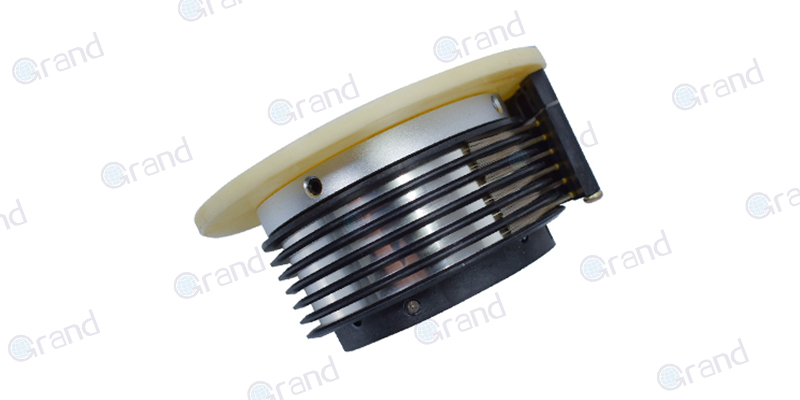
Working Principle of a Standard Separate Slip Ring
To truly appreciate the significance of standard separate slip rings in diverse industries, it’s essential to understand the underlying principle behind their operation. By understanding this principle, the applications and significance of these devices become clearer.
The Standard Separate Slip Ring boils its functioning down to two key parts: the stator (the stationary part) and the rotor (the part allowed to rotate). The stator and the rotor are designed to be in close contact through intermediary components called brushes.
These brushes run along the surface of the rotor, maintaining electrical contact with it while the rotor rotates. They are designed to be low friction and hence enhance the longevity and efficiency of the slip ring by reducing wear and tear. These brushes play the critical role of bridge, transferring the electrical power and signals from the stator to the rotor and vice versa.
The rotor is connected to the rotating structure of the system which could be anything from a wind turbine blade to a radar antenna. The stator, on the other hand, is connected to the stationary part of the system. The system components that need to receive or transmit power or signal are connected to this stator, which is usually a power source or a control system.
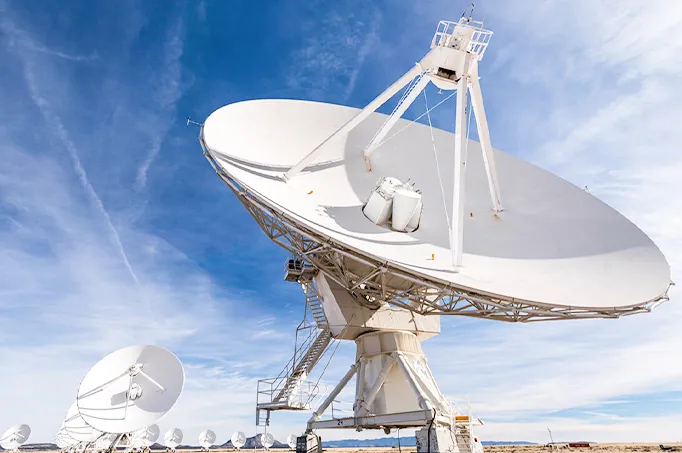
When the rotor rotates, the need for delivering electricity or communication to this rotating part of the system remains uninterrupted. This is because the brushes that are in contact with the stator stay stationary, thus ensuring a steady transfer of power or signal to the moving part of the system, irrespective of the rotation.
The beauty of the standard separate slip ring is that this basic principle of operation remains the same, regardless of the complexity or simplicity of the system in which they are deployed. The design modifications, enhancements, and variations you might find in different standard separate slip rings are typically adaptations to suit the specific requirements or constraints of its particular application.
This largely frictionless rotational transmission controlled by the standard separate slip ring not only minimizes energy losses but also prevents the twisting and tangling of wires, which could pose operational problems or even system failure. This is why standard separate slip rings are such a crucial component in many modern machines and electronic devices.
By understanding their working principle, we realize how an elegantly simple solution these slip rings provide in maintaining system integrality across various applications, from wind turbines and advanced radar systems to medical imaging machines and digital television cameras.
Standard Separate Slip Ring Key Components and Their Functions
To delve deeper into the functionalities, selection, and applications of Standard Separate Slip Rings, understanding their primary components and functionalities will be an invaluable step. The operation of these rings depends on three main components: the rotor, the stator, and the brushes. Each of these parts plays a distinct role that is essential to the functionality of the device, and a failure in one can jeopardize the entire system’s operation.
The Rotor
The rotor is the rotating part of the slip ring. It is typically connected to the rotating structure of the system. The rotor is the component on which the brushes slide over as it turns. This rotation is what establishes the crucial connection between the stationary and moving structures. It is at the core of the signal or power transmission process, allowing the free movement necessary for the process to work.
The Stator
The stator, on the contrary to the rotor, is the part of the slip ring that remains stationary. It’s fixed, often connected to a stable component, like a power source or control system, in the electrical device at hand. The signals or power to be transmitted from or to the rotating part of the system are fed into or taken from this stationary part. The stator forms a pillar that allows a stable point of contact and ensures that the brushes maintain a consistent connection.
The Brushes
The brushes serve the vital function of establishing and maintaining the electrical contact between the stationary and rotating parts. These are typically made from a mixture of precious metals to ensure efficient conduction, and their design ensures low friction for smooth operation. As previously mentioned, these brushes and the contact they make with the rotor allow for the uninterrupted transmission of power and signals from the stator to the rotor.
Each of these pieces interlock perfectly in the Standard Separate Slip Ring, creating an elegant solution that enables continuous and efficient transmission of power and signals between stationary and moving components. By isolating the key functionalities, we establish an understanding of the intrinsic logic of its operation, which allows us to assess the applications and specific requirements of using these in diverse industries.
Types of Standard Separate Slip Rings
Standard separate slip rings come in several forms, each designed to cater to specific requirements and conditions. While the fundamental principle of operation remains the same across types, subtle variations in design, materials, and construction serve various industries and application needs uniquely.
- Mercury-wetted Slip Rings
Mercury-wetted slip rings are designed for applications requiring low electrical noise levels and extended service life. These slip rings employ mercury, an excellent conductor, as the contact medium between brushes and rings. The liquid nature of mercury ensures nearly zero contact resistance and low noise levels. However, due to environmental concerns and potential health hazards, mercury-wetted slip rings have limited usage, predominantly in laboratory environments.
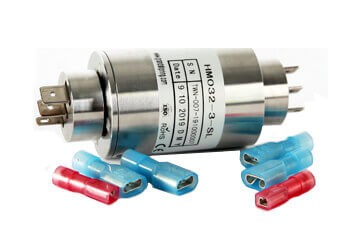
- Wireless or Contactless Slip Rings
Wireless or contactless slip rings are designed to provide electrical connectivity without physical contact between the stator and rotor. This method typically employs electromagnetic waves, such as radio or microwave communication or Inductive Coupling. By eliminating wear and tear caused by friction, these slip rings can experience a longer lifespan. They are commonly used in applications where low maintenance or hygiene is pivotal, such as in food and beverage manufacturing or medical devices.
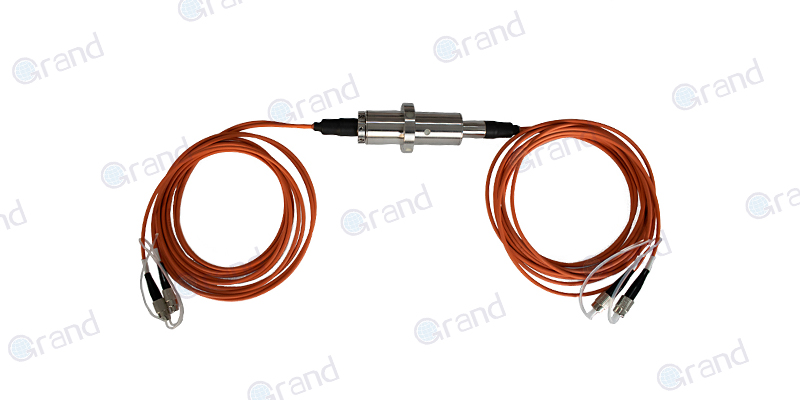
- High-frequency Slip Rings
High-frequency slip rings are capable of carrying high-frequency signals between stationary and rotating components. This is particularly useful in digital communication systems, radar, and satellite applications where data transfer frequency might be high.
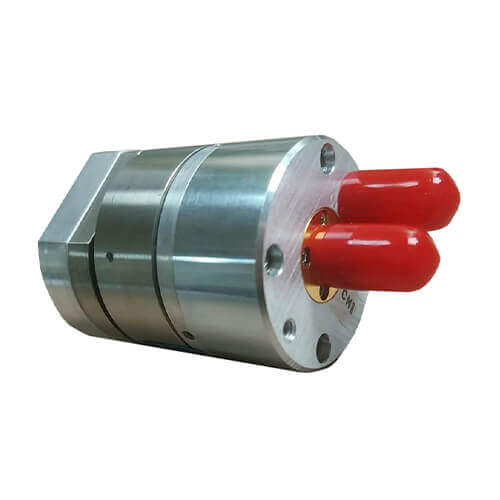
- Fiber Optic Slip Rings (FORJ)
Fiber Optic Slip Rings, also known as Fiber Optic Rotary Joints (FORJ), are designed for transmitting optical signals alongside electrical signals across rotary interfaces while maintaining the integrity of the optical path. These slip rings are vital in applications with high data transmission rates and where resistance to electromagnetic interference is essential, such as in telecommunication systems, and high-speed data acquisition systems.
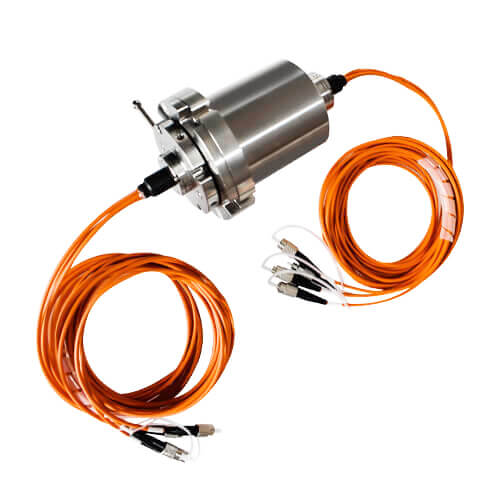
- Pancake Slip Rings
Also known as disc slip rings, these have platters stacked together with contacts on the circumference. The design reduces the axial length but tends to increase rotational inertia, potentially limiting the rotational speed. They are often used in instances where the height or axial length is restricted.
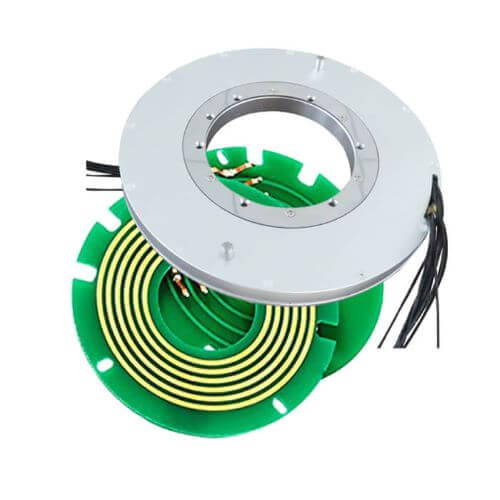
- Capsule Slip Rings
Capsule slip rings, also known as miniature slip rings, are designed for systems with limited space and weight requirements. Despite their compact size, they are capable of transmitting signals and power efficiently. Widely used in CCTV systems, medical equipment, and small-scale robotic systems.
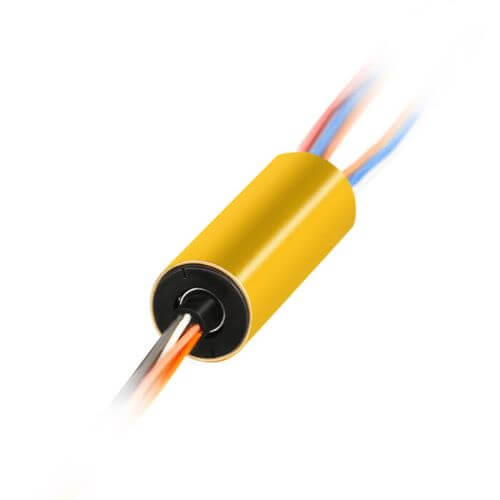
Undoubtedly, these variations in the types of slip rings highlight the versatility of this component. By tailoring the design and materials of construction to meet specific application needs, standard separate slip rings play a crucial role in a wide array of industries. Whichever type is chosen, they ensure an uninterrupted, reliable transmission between stationary and rotating components in a system.
Standard Separate Slip Ring Applications and Industries
The ubiquitous nature of Standard Separate Slip Rings is best exemplified by their wide-ranging applications, from robotics and medical equipment to power generation and more. By ensuring an unbroken transfer of power and signals between stationary and rotating parts, these slip rings find crucial use across diverse industries. Understanding these applications provides valuable insights into the versatility and vital role of these components.
- Robotics:
Robotic arms often consist of rotating limbs and parts that need a continuous power supply or signal reception for proper functioning. Standard Separate Slip Rings play a vital role in maintaining these connections, enabling fluid movements and uninterrupted functioning. Their usage extends into automated assembly lines, drones, and even advanced AI-driven robotics.

- Medical Equipment:
Medical devices, such as CT scanners and MRI machines, which revolve around patients to capture detailed images employ these slip rings to maintain constant power and signal transmission during operation. Also, a variation of slip rings, contactless slip rings, are often chosen for medical environments due to their minimal maintenance needs and hygiene factors.
- Renewable Energy Generation:
Wind turbines, which are a critical part of renewable energy sources, utilize slip rings to transfer electricity from rotating blades to the stationary grid. The slip rings ensure a seamless transmission of generated power.
- Military and Defense:
Advanced radar systems that continuously rotate to monitor airspace or maritime activity use slip rings to constantly communicate data to stationary processing units. Also, turret systems in armored vehicles use slip rings to maintain a continuous power supply and communication signals.
- Manufacturing:
Many pieces of equipment in a manufacturing plant, from rotating tables and automated arms to packaging machines, require the use of slip rings for power and signal transmission.
- Broadcasting:
In the broadcasting industry, broadcast cameras and satellite trucks use slip rings for smooth and continuous rotational motion. One common application is in the rotating pedestals that allow a camera to pan smoothly during sports or live events.
- Aerospace and Satellite Systems:
Satellites use high-frequency and fiber-optic slip rings for communication and control while maintaining the high-speed data transmission needed for modern telecommunications.
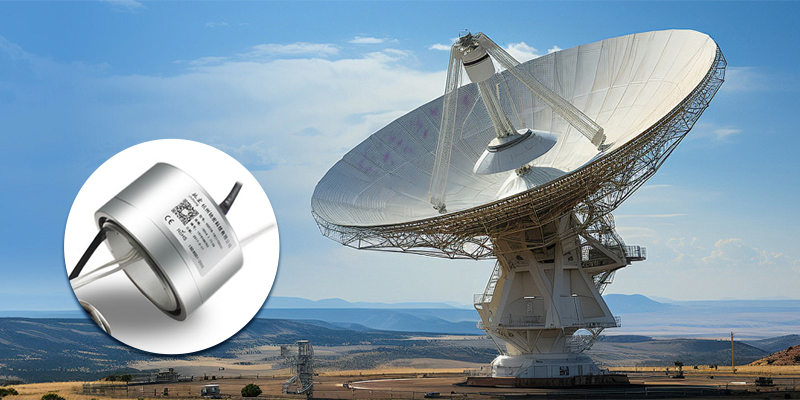
These wide-ranging applications emphasize the importance of Standard Separate Slip Rings in the proper functioning of systems across various industries. By facilitating fluid machine operation through uninterrupted power supply and signal transmission, slip rings play an essential role in the productivity and effectiveness of many modern devices and systems.
Key Factors to Consider When Choosing a Standard Separate Slip Ring
The broad range of applications for Standard Separate Slip Rings often brings along unique requirements and considerations. A deep understanding of specific needs is imperative when choosing the right slip ring for an application. Key factors, including the operating environment, electrical requirements, signal transmission types and speeds, compatibility with the existing system, material quality, and certifications, invariably come into play.
- Operating Environment:
The choice of slip ring is largely dictated by the physical environment in which the system will operate. Factors such as temperature, pressure, humidity, and exposure to dust, or corrosive materials should be considered. For example, in a high-temperature environment, slip rings with heat-resistant materials should be selected.
- Electrical Requirements:
Power and signal transmission needs are primary considerations for selecting a suitable slip ring. A system’s voltage and current requirements must be met by the chosen slip ring. Similarly, the types of signals — whether analog or digital — to be transmitted should also influence the selection.
- Signal Transmission Types and Speeds:
Different applications may require differing signal types, including data, video, or control signals, and the slip ring needs to cater to each one efficiently. High-speed data transmission might need fiber optic slip rings, while applications like radar might require high-frequency slip rings.
- Compatibility with the Existing System:
The compatibility of a slip ring with the existing system should be evaluated to ensure it fits seamlessly both mechanically and electronically. The dimensions, mounting options, connection options, and other related factors should be considered during selection.
- Material Quality:
The quality of materials used in the slip ring directly impacts its durability and performance. Brushes require efficient conductive materials for optimum performance, while the housing material should resist corrosion and wear.
- Certifications:
Certifications play a crucial role in the selection of slip rings that can meet specific safety and quality regulations for certain industries, like medical devices or aerospace applications.
In summary, the selection of a slip ring involves careful consideration of a variety of factors. Understanding these can make the difference between smooth, efficient operation and subpar performance or system downtime. The right slip ring, optimized for specific application needs, can significantly contribute to the system’s overall performance and longevity.
Maintenance and Troubleshooting of Standard Separate Slip Rings
Maintaining and troubleshooting Standard Separate Slip Rings form integral parts of their lifespan and efficient functioning. Ensuring proper upkeep can noticeably reduce common issues and lengthen the life of the slip ring, while effective troubleshooting can keep systems running smoothly and prevent downtime. In this context, the cruciality of regular maintenance and calling in professional help during complications rises to the surface.
Maintenance Best Practices
Regular maintenance is the key to ensuring the longevity and consistent efficiency of slip rings. Here are some recommended practices:
- Regular Inspection: Periodically inspecting the slip ring for signs of wear, corrosion, or dust accumulation should be the first step in any maintenance regime.
- Cleaning: Dust and other contaminants can increase electrical noise and reduce signal quality. Cleaning with appropriate methods, usually dry brushing or pressure air blowing, can help maintain signal quality.
- Brush Replacement: Brushes, despite being designed for prolonged life, can wear down over time. Regularly checking and replacing them can prevent major performance issues.
- Proper Lubrication: Some slip rings require lubrication for smoother operation and to reduce mechanical wear. Use the appropriate lubricant as recommended by the manufacturer.
- Usage Within Specified Parameters: Constantly operating the slip rings beyond their electrical and mechanical specifications can lead to accelerated wear and tear. Ensure usage within the provided parameters.
Common Issues and Troubleshooting
Despite best maintenance practices, issues can occasionally arise in Standard Separate Slip Rings, demanding effective troubleshooting. Identifying the problem accurately is half the battle in resolving issues.
- Electrical Noise: Dust and debris can cause electrical noise in signal transmission. Regular cleaning and keeping the slip ring away from strong magnetic fields can alleviate the issues.
- Reduced Transmission Efficiency: Worn-out brushes or contact surface erosion can lead to reduced transmission efficiency. Troubleshooting requires brush replacement or servicing the contact surfaces.
- Increased Electrical Resistance: This can be due to corroded contact surfaces or worn-out brushes. Again, replacement or servicing is often the solution.
Enlisting the help of qualified personnel during these troubleshooting scenarios can greatly ease the process, as they bring in-depth knowledge and technical experience.
Overall, the importance of regular maintenance and proficient troubleshooting cannot be overstressed. These practices not only enhance the longevity and performance of the Standard Separate Slip Rings but also contribute to the smooth functioning of the entire system in which they are a crucial part.
Conclusion
Standard separate slip rings are a critical component in a wide array of industries, providing continuous and seamless power and signal transmission between stationary and rotating parts. By understanding their applications, workings, and the factors to be considered when selecting one, users can ensure that they make the most appropriate choice for their specific needs, while best practices in maintenance and troubleshooting result in an extended and optimally performing device life cycle.
FAQs about Standard Separate Slip Rings
Standard Separate Slip Rings play a pivotal role in countless applications. Nevertheless, their complex nature often leads to a host of questions, ranging from installation procedures and maintenance regimes to troubleshooting common issues and understanding their lifespan. Here, we answer some commonly asked queries.
Q: How are Standard Separate Slip Rings installed?
A: Standard Separate Slip Rings are installed depending on their design, size, and application requirements. Important installation factors to consider include alignment, securing methods, and connection to the power source or data system. While large-scale industrial slip rings might require professional installation, many smaller ones can be installed by the user following the provided instructions.
Q: What maintenance is required for Standard Separate Slip Rings?
A: The maintenance of slip rings largely depends on the type of slip ring and the application environment. Some require regular cleaning for dust and debris, while others, like the mercury-wetted slip rings, need careful handling due to potential health hazards. However, newer designs, such as contactless slip rings, require minimal maintenance, making them suitable for use in environments where regular maintenance isn’t feasible.
Q: How can one troubleshoot common issues with Standard Separate Slip Rings?
A: Common issues with slip rings usually involve electrical noise, reduced transfer efficiency, increased resistance, or physical wear and tear. Thorough inspection, cleaning, or component replacement (like the brush) can sometimes solve these problems. However, specialized machines or systems might require experienced technicians for troubleshooting and repairs.
Q: What is the typical lifespan of Standard Separate Slip Rings?
A: The lifespan of a slip ring can vary significantly depending on its type, quality of materials, application environment, and maintenance schedule. While some slip rings might function efficiently for a few years, others, like the robust industrial ones, may last for a decade or more.
Q: Are there risks associated with using Standard Separate Slip Rings?
A: While slip rings are generally safe to use, specific risks can be associated with certain types, especially if they aren’t handled correctly. For instance, mercury-wetted slip rings pose health hazards if not managed properly. Similarly, misalignment or incorrect installation could lead to operational risks.
See What We Can Do
